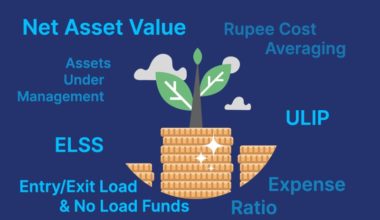Small-cap stocks are the stocks of companies with a market capitalization of less than Rs. 500 crores. They are up and young companies that focus on growth opportunities but also carry a huge amount of risk and volatility. Investing in small caps provides a chance to beat the institutional investors that can sometimes outperform the large-cap stocks. The Securities and Exchange Board of India (SEBI) categorizes the companies into different market capitalizations. The companies after the first 250 firms are small-cap companies and about 95% of the firms in the country fall in this category.
What are Small-cap Stocks – Features?
Market capitalization measures the market value of a company that is listed on the stock market and is publicly traded. Small-cap stocks include those firms that have low revenues and hence, the smaller size of capital. They usually have a smaller size of the workforce as well and do not have robust business management like the large-cap or the mid-cap. But, the large-cap or the mid-cap firms were also small firms at one point in time which grew in their capital size. Some of the salient features of small-cap stocks are:
- Growth Factor
The small-cap stocks have the potential for a high rate of growth and hence, the possibility of giving high returns to the investors, sometimes as high as 100% returns. They provide the wealth generation opportunity, that makes them an attractive investment avenue. Identifying the right stocks and holding them for the long term can yield good returns and lead to handsome capital appreciation. They are often viewed as multi-baggers as they can offer very high returns in comparison to their larger counterparts.
- High Volatility
Small-cap stocks are also highly volatile as they can dwindle easily in a bear market trend. Small-sized companies have lesser revenue streams, unlike the large-cap firms that have a diversified business and also expand into different industries. Similarly, mid-cap stocks have become more established with more cash flow/capital and a robust lineup of products and services. They are gradually expanding their market share, are often involved in mergers and acquisitions becoming more stable than their small-cap peers.
- Low Priced Stocks
Small-cap stocks have smaller size of capital and outstanding shares in the stock market. Their stock value is also underpriced owing to the under-recognition of the companies in inefficient markets. If investors pick up quality stocks at a low price and invest in them, they have an advantage over institutional investors who ignore these stocks. In due time, the small-cap stocks will gain recognition and acquire capital as they have a higher organic growth rate than the large-cap stocks. By the time, seasoned investors will gauge their interests in these stocks that will push up the share prices, you will earn optimum returns on stocks bought at fair prices.
- Liquidity
Small-cap stocks are the least liquid among the large, medium, and small-sized companies due to their less trading in the stock market. As they are less recognized, not easily bought and sold, they offer less liquidity. Therefore, investments for short-term purposes should not be made in small-cap stocks.
Risks Associated with Investments in Small-cap Stocks
Small-cap stocks are highly volatile and susceptible to market risks. This is the biggest risk factor associated with investments in small-cap stocks. Hence, investors need to research well before they invest in small-cap stocks and should make proper asset allocation decisions. This is because the small-cap stocks can generate returns but the other lesser volatile investments must cushion down the risk factor. Aggressive investors may invest a handsome amount in the small stocks whereas those with a conservative approach can at least invest 10% of the total investments in small-cap stocks.
Who Should Invest in Small-cap Stocks?
The large-sized companies have almost reached the zenith of the growth graph and the biggest gains in their history may be over. They often acquire new firms, usually the smaller ones, to expand and enter new industry spaces. The mid-cap stocks are positioned somewhere in the middle of the growth cycle where they are more stable and established than the small-cap stocks. Small-cap stocks offer different rewards and risks than their larger counterparts. Below are the kinds of investors who should invest in small-cap stocks:
- Investors wanting high yield, more than what large caps can offer
- Investors who can be patient to stay invested for a long-term for about a decade. A minimum of 5-7 years is suggested but it is better to have a longer time horizon
- Investors must be capable of bearing high risks as they are highly volatile to market fluctuations. They are high-risk high return investments
Wrapping it up:
Small-cap stocks are those that come after the large and medium-sized companies in the SEBI list of capitalization of the companies. All firms ranking after the 250th position are small-capitalization ones. They are the up-and-coming firms that have huge growth potential coupled with high risks. They can yield high returns in the long run for high-risk appetite investors who seek capital appreciation.










